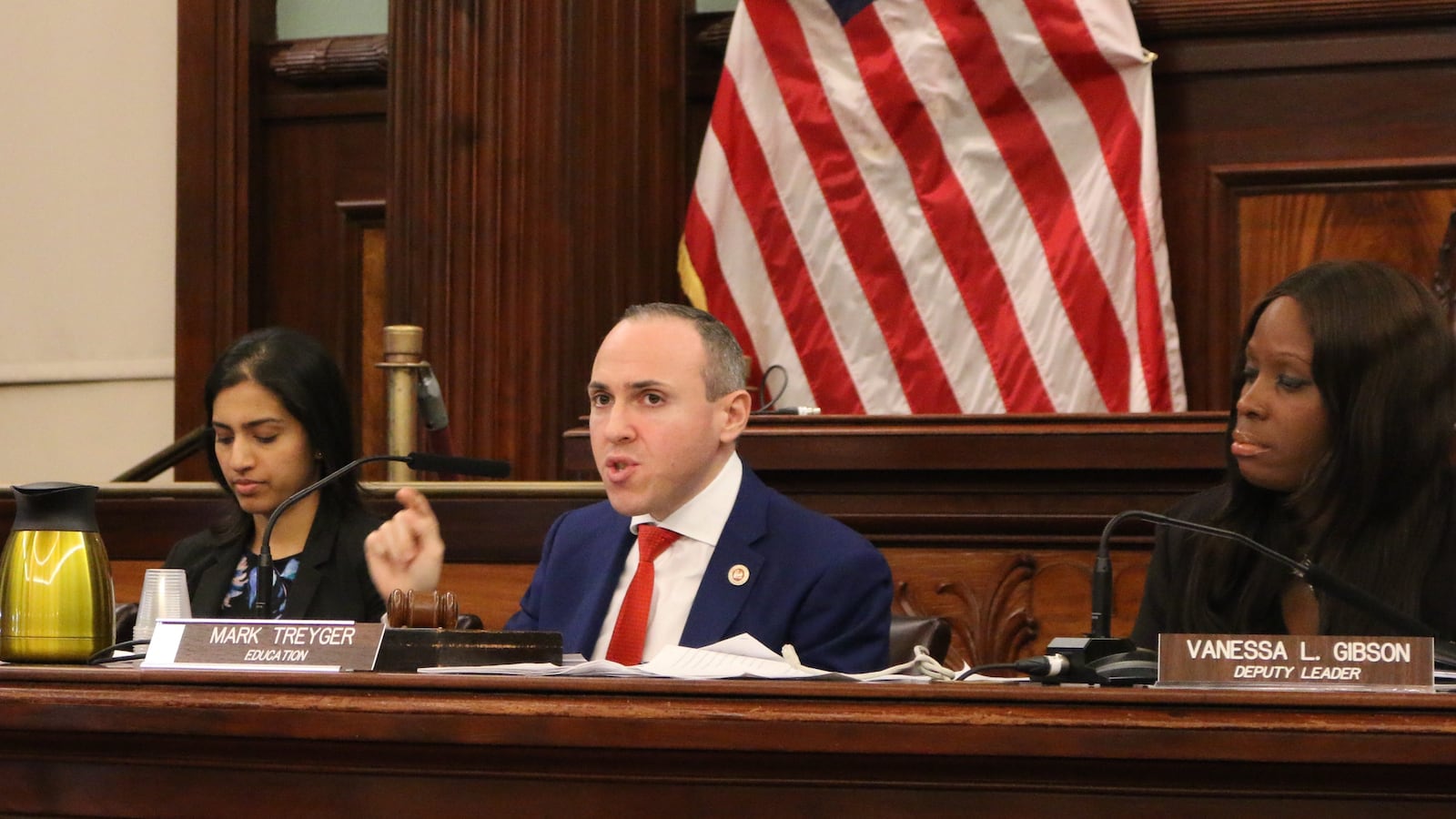The education department should ensure that all areas inside schools, not just classrooms, are free from peeling lead paint, according to a letter two city lawmakers sent schools Chancellor Richard Carranza on Wednesday.
The letter, sent by City Council Speaker Corey Johnson and the education committee chairman, Mark Treyger, criticizes the city’s current practice of only inspecting classrooms for peeling lead paint — leaving out cafeterias, art rooms, gymnasiums, and certain rooms where students with disabilities get extra help.
By not looking for and addressing deteriorating lead paint in those areas, the city is falling short of Mayor Bill de Blasio’s promise to eliminate childhood lead exposure by 2029, Treyger and Johnson write.
“How can our city eradicate lead in less than 10 years if DOE is not diligently examining all school spaces for lead contaminants?” the letter asks.
City officials have said they will conduct an independent review of their lead paint protocols, but have declined to provide details, including when that review will take place, who will conduct it, and whether any findings will be released publicly.
Last month, the education department revealed that nearly 1,000 classrooms in schools built before 1985 that serve students under 6 have deteriorating lead paint. The city’s current protocol does not require that spaces other than classrooms be tested or remedied. Officials have promised to fix classrooms where they found peeling lead paint by sealing the damaged areas and repainting before school starts in September.
Deteriorating lead paint can chip off or emit dust that students may inadvertently ingest. Exposure to lead can negatively impact brain development and impede a student’s capacity to learn; it may also result in aggressiveness or inattentiveness. The risks are particularly acute for young children, though research has found that simple interventions can help treat the effects and even improve school performance.
Treyger said testing areas beyond classrooms is common sense. “To me this is beyond legal mandates and politics,” he said. “This is just the right thing to do to make sure we’re protecting the safety of children and staff.”
Although lead experts who have reviewed the city’s lead testing protocol say it appears to follow the relatively minimal requirements established by the federal government, they also said the city could take more aggressive steps to protect children.
The city’s currently does not require lead dust testing before peeling lead paint is discovered, for instance, even though lead dust is the most common way children are affected by lead and can appear even in the absence of visibly peeling paint. Experts have also suggested the city proactively use X-ray testing in all classrooms in older buildings. That way, they can create a roadmap of where all the lead paint is and immediately remediate it when it peels.
Treyger is in favor of using such X-ray technology to search proactively for lead paint before it peels, in addition to testing classrooms for lead dust even without signs of deteriorating paint. City officials say they are considering proactive X-ray testing.
Carranza has suggested the results of proactive lead dust tests could be misleading. The city tests for lead dust to determine whether or not it’s safe for students to return to class, but it does so only after discovering and getting rid of peeling paint.
The letter raises a number of other concerns, including that the education department took several days to communicate with stakeholders after it disclosed the classrooms where it found lead, and that the current protocols for identifying lead aren’t always clearly communicated to schools.
Education officials have been criticized in the past for failing to use best practices to test school water fixtures for lead. After using a more rigorous testing method, the city eventually revealed that significantly more faucets had high lead levels.
“The safety of students is our priority, and we have always proactively addressed risks to ensure their health,” an education department spokesman, Will Mantell, said in a statement, noting that officials are reviewing the letter. “Our schools are safe, and this summer we’ve enhanced our protocols and strengthened communication with families around the steps we take to prevent lead exposure for kids under six.”
You can read the full letter below.


